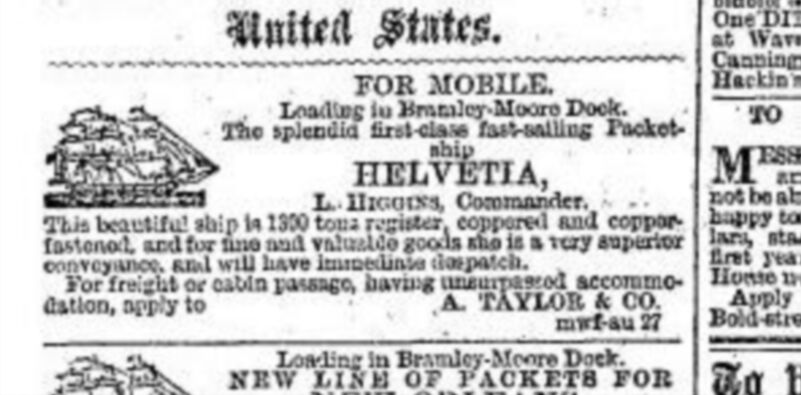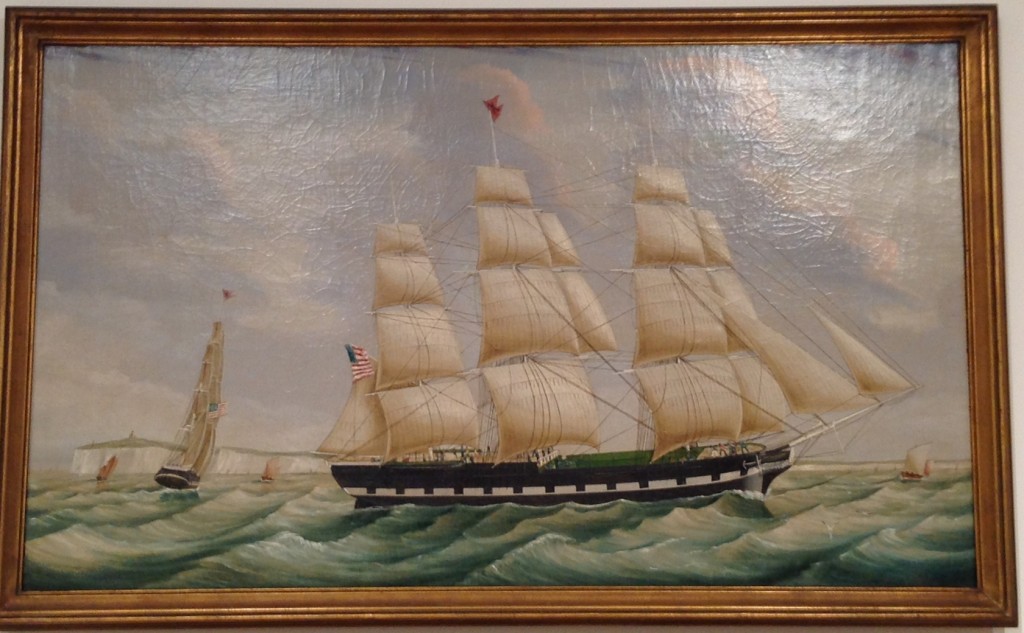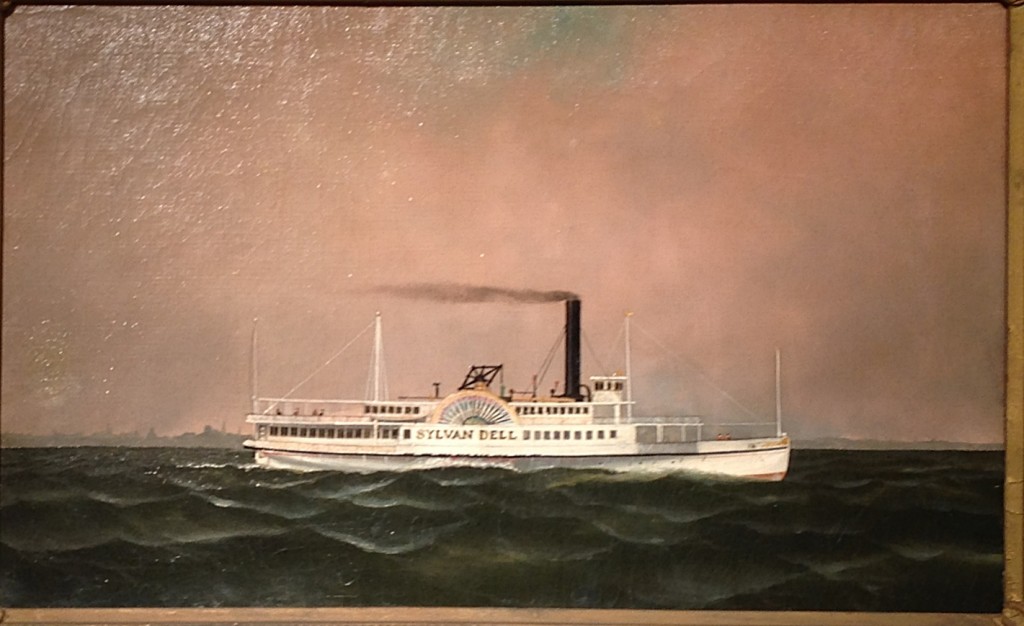I am knee-deep (p. 150) in the process of revising my novel in progress. I enjoy the revision process more than writing a first draft. It’s a chance to understand themes and cull them out, to get a “big picture” view. Also, to catch times when I may have painted a scene too sentimentally. I think of these moments as a “fictional reality,” the most realistic world I’ve been able to cobble together based on research, but where I must still dig deeper to find the truth.
 At the moment I’m revising the chapter where my great-great-grandfather’s packet ship Helvetia arrives in New York harbor. The year was 1857. In the National Archives and Records Administration, as I scrolled through microfilm searching for a ship manifest with Michael Harm’s name in the first half of 1857, I encountered hundreds of lists. Three or four immigrant ships might arrive at Castle Garden in one day, from Liverpool, Hamburg, and other European ports. Diary accounts of the time note how ships hailed one another in the north Atlantic sea lanes and kept track of the sightings. As I pictured New York harbor, clotted with barges, steamships, schooners, and immigrant packets, I wondered — would any of these ships be carrying African slaves? It was pre-Civil War after all.
At the moment I’m revising the chapter where my great-great-grandfather’s packet ship Helvetia arrives in New York harbor. The year was 1857. In the National Archives and Records Administration, as I scrolled through microfilm searching for a ship manifest with Michael Harm’s name in the first half of 1857, I encountered hundreds of lists. Three or four immigrant ships might arrive at Castle Garden in one day, from Liverpool, Hamburg, and other European ports. Diary accounts of the time note how ships hailed one another in the north Atlantic sea lanes and kept track of the sightings. As I pictured New York harbor, clotted with barges, steamships, schooners, and immigrant packets, I wondered — would any of these ships be carrying African slaves? It was pre-Civil War after all.
A search for 1857 slave ships, turned up an official reality stating that the importation of slaves into the U.S. was outlawed in 1808. According to an article in Wikipedia, the last documented slave ship to arrive was The Wanderer, in November of 1858. Hmm. A fictional reality? It seems it was hotly disputed, the article elaborates, as to whether or not undocumented slave ships were continuing to reach American shores after that year. Either way, it was The Wanderer, with its 409 slaves, that received all the attention:
The slaves who arrived to the United States on the Wanderer gained a celebrity status, that spread beyond the south to newspapers in New York, Washington, and London. They were the only group of slaves who were frequently identified with the ship which they arrived on.
Here is another discovery, a link to an 1857 interview with a Captain James Smith, who describes New York’s South Street as being “the chief port in the world for the Slave Trade.” The interview continues:
My vessel was the brig ‘Julia Moulton.’ I got her in
Boston, and brought her here, and sailed from this port direct for the coast of Africa.
But do you mean to say that this business is going on now?
Yes. Not so many vessels have been sent out this year, perhaps not over twenty-five. But last year there were thirty-five. I can go down to South Street, and go into a number of houses that help fit out ships for the business. I don’t know how far they own the vessels, or receive the profits of the cargoes.
But these houses know all about it.
1857 was also the year of the Dred Scott decision, which denied citizenship to all slaves, ex-slaves, and descendants of slaves and denied Congress the right to prohibit slavery in the territories. According to this PBS Timeline, the last slave ship to bring slaves into the U.S. landed in Mobile Bay, Alabama in 1859. I’m thinking there were probably others.









